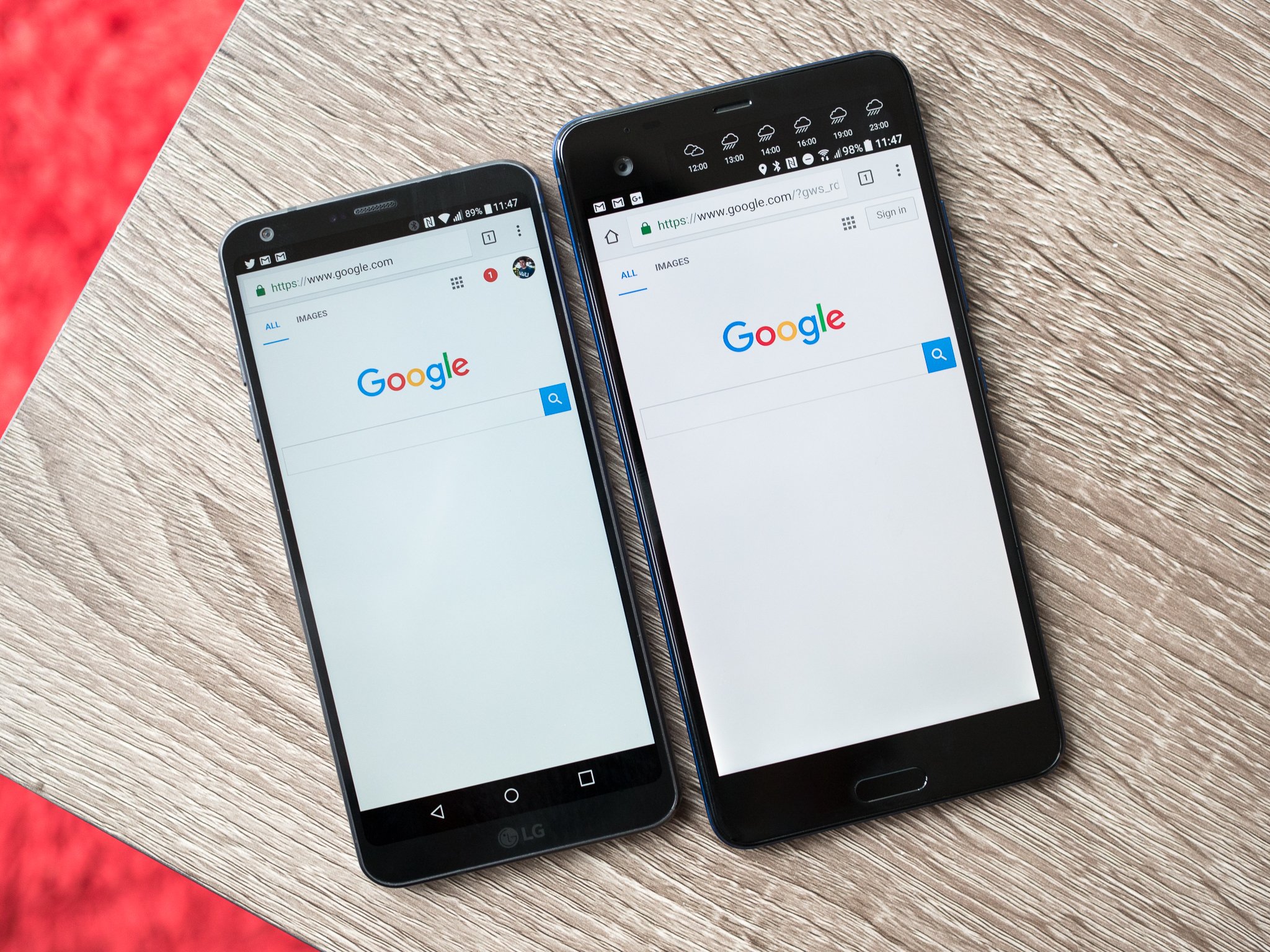In an 18:9 world, we need a new way to quantify screen size

With the arrival of the 5.7-inch LG G6, we have entered the era of 18:9 smartphones. Taller displays are set to become a major trend in phones in 2017, with Samsung rumored to use an even taller "18.5:9" configuration in its upcoming Galaxy S8, which looks set to come in 5.8- and 6.2-inch flavors. Apple, too, may switch to a taller display with on-screen controls for its upcoming iPhones, which have also been rumored to use 5.8-inch panels.
In the smartphone world, we've become reliant on diagonal measurements of the screen as a way to quantify the size of a device — 4.7- to 5-inchers were small, 5.7 and up was "phablet" territory. For the most part, it worked, because we were dealing with the same aspect ratio across the board — standard 16:9, same as the majority of TVs.
But as phones with 18:9 panels start to ship, it's tempting to directly compare the diagonals with their 16:9 forerunners That can be misleading.
The size difference is hilarious here. pic.twitter.com/Lq4BtbaqHRThe size difference is hilarious here. pic.twitter.com/Lq4BtbaqHR— Andrew Martonik (@andrewmartonik) March 8, 2017March 8, 2017
Consider the two phones above, the HTC U Ultra and LG G6. Both have 5.7-inch screens, meaning, corner-to-corner, the active portion of the display measures around 5.7 inches (with whatever rounding up or down the manufacturer wants to factor in there.) But it's plain to see in the photo that the U Ultra has a way larger screen, and that's because of the basic geometry of the thing — its screen area is bigger.
After taking out a tape measure and taking some readings, here are the screen areas for these "5.7-inch" devices:
- LG G6: 86.5cm²
- HTC U Ultra: 90.2cm² (not including the second screen)
- (And for good measure let's throw in the Nexus 6P: 90.7cm²)
The diagonal measurement alone doesn't tell the full story. In this instance, the 16:9 phones have a larger display area. Of course they're also much wider, which may be undesirable for one-handed use. But the point is they aren't truly the same size.
A 16:9 display at 5.7 inches is absolutely not the same as an 18:9 display at 5.7 inches
By the same token, don't expect a 5.8-inch Galaxy S8 to offer the same phablet-class real estate as a Note 5 or GS6 edge+. It'll be taller, and you may see more emails or lines of web content at once, but the screen area will be substantially different. The same argument applies to the Galaxy S8 Plus, which is around the same physical size as a Note 7.
Get the latest news from Android Central, your trusted companion in the world of Android
Things become even more confusing when you recall that the G6 has software keys eating into that 5.7-inch diagonal, whereas the U Ultra, with its capacitive buttons, does not. If you exclude the portion of the screen lost to soft keys, the G6's screen area is reduced to 80.5cm². (Though admittedly, many apps can clear away the soft keys and use the full display size.) This factor alone should make the 5.8-inch GS8 feel a lot like a 5.2- or 5.5-inch phone to Galaxy owners used to off-screen keys.
That's not to say talk of phones like the LG G6 (and its contemporaries) delivering more screen in a smaller form factor is total BS. The G6 is substantially smaller than the iPhone 7 Plus, while also managing to deliver a slightly larger screen area — 86.5cm² to the 5.5-inch iPhone's 84.5cm².
Bottom line: A 16:9 display at 5.7 inches is absolutely not the same as an 18:9 display at 5.7 inches, because geometry. Equating the two is misleading at best. Screen area is a much more accurate way to pin a number on how large a screen is. So until manufacturers start printing area measurements on device boxes, we'll just have to use common sense to cut through the marketing.

Alex was with Android Central for over a decade, producing written and video content for the site, and served as global Executive Editor from 2016 to 2022.
